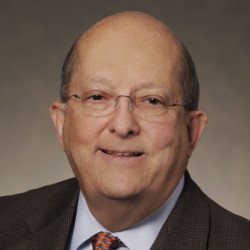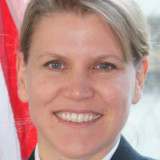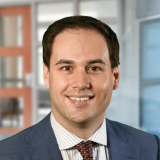The Gala held at the Field Museum on March 28, 2025, celebrated the 75th anniversary of the founding of the American College of Cardiology. The spirit of the founders and the continued search for high-quality education to improve the care of patients carried over into the Annual Scientific Sessions that followed this historic event.
In 1949, thirteen cardiologists in New York City — who were members of the New York Cardiological Society — found that their tensions with the elitism and the discrimination of the American Heart Association (AHA) at that time had risen to a point that they needed to form a new organization. Several of the founders had been members of the German Cardiac Society, the oldest national cardiac society in Europe, and they used the principles of that society to form a new organization dedicated to the education of the practicing physician. The enthusiasm of the founding physicians can be summarized by a quote from a founder, Dr. Franz Groedel: “We will meet the future not merely by dreams but by concerned action and inextinguishable enthusiasm.”
All recognized and certified cardiologists in the U.S. were offered membership, and two years later, the first national meeting occurred with 275 attendees. Many years later, Dr. Bruce Frye, an ACC President, said, “Both Franz Groedel and Bruno Kisch … would be very proud if they were alive to see the fulfillment of their visions and dreams that led to the birth of the College in 1949 – it is ironic that their ‘dreadful years in Germany’ and their loss to German Cardiology helped to contribute to advances in American and International cardiology.” Today, the ACC has grown to more than 56,000 members in the United States and internationally. Over 38,000 professional attendees participated in the virtual Annual Meeting in 2020, and attendance now exceeds 17,000 in-person attendees.
Wonderful displays showed the advances in cardiovascular medicine and surgery over the 75 years of the ACC’s existence. I would like to highlight some of those milestones to celebrate this year’s meeting. These discoveries, accomplishments, and therapies have been highlighted at ACC meetings over the years.
In 1958, the first pacemaker was inserted, marking the beginning of pacing therapy. Twenty-two years later, the first successful implantable cardioverter-defibrillator was placed in a human. In 2016, the first leadless pacemaker was approved, offering a minimally invasive alternative to traditional pacemakers.
In the 1980s, numerous studies demonstrated that the early administration of aspirin reduced mortality with acute myocardial infarction. Subsequently, many anti-platelet therapies were approved with reduced mortality and morbidity with angioplasty and stents. The ACC and the AHA, along with other specialty organizations, have refined numerous guidelines for acute coronary syndromes and percutaneous coronary interventions (PCI).
In 1953, Dr. John Gibbon performed the first successful cardiac surgery using cardiopulmonary bypass to repair an atrial septal defect. Less than 10 years later, coronary bypass grafting (CABG) was introduced. Selective coronary angiography was first performed in 1958. In the 1960s, most hospitals introduced coronary care units to reduce mortality associated with acute myocardial infarction.
Inspired by sonar technology used in naval applications, reflective ultrasonic techniques were first used in 1953 to non-invasively visualize cardiac structures. In 1965, Dr. Harvey Feigenbaum published the first textbook on echocardiography, which led to its increasing use in clinical practice. In the 1970s, creatine phosphokinase (CK) isoenzyme was identified as the preferred marker of myocardial infarction. A landmark study in Nature in 1988 described the discovery of brain natriuretic peptide (BNP) in porcine brain tissue, a rapid diagnostic test for heart failure.
The Framingham Heart Study started one year before the formation of the ACC. Numerous papers later defined our understanding of cardiac risk factors. By 1976, the Framingham Risk Score was widely accepted. Since then, refinements have included other risk factors and social determinants of health.
These highlights are just a few snapshots of the great achievements and contributions of thousands of scientists, researchers, clinicians, nurses, and other cardiovascular professionals over these 75 years.
In the almost 50 years since I completed my cardiology fellowship, I have seen a significant drop in the incidence and mortality rates associated with myocardial infarction. During my training and for several years thereafter, we only attempted to manage rhythm disturbances and complications associated with the acute event. I was fortunate to be an early adopter of intra-coronary thrombolytic therapy before systemic analytics were approved. Having learned the skills of angioplasty from the great innovators Drs. John Simpson and Andreas Gruentzig, I quickly moved to primary PCI for MI’s as it was shown to be preferred therapy. I was fortunate to be an interventional cardiologist in a center that was associated with a highly efficient EMS, and we were able to achieve outstanding door-to-balloon times that lead to remarkable outcomes.
During my career, I have watched the science and pharmacology of numerous drugs that have significantly improved our management of numerous cardiovascular conditions. The drugs introduced during my tenure include ACE-inhibitors, selective beta-blockers, ARNIs, mineralocorticoid receptor agonists, statins, PCSK9 inhibitors, SGLT2is, GLP-1RAs, just to name a few. The instrumentation in our cath labs and the tools that we use today were beyond even our wildest dreams in 1975 when my formal training ended.
Seeing these milestones displayed and hearing new clinical trials and emerging science at this year’s meeting make me fully appreciate how far we have come and what the future may hold.
And, we should not forget: Dr. Groedel would be thrilled by our enthusiasm to go forward to improve heart health worldwide.
Dr. Sherman has no conflicts of interest to report.
Image by Crystal Eye Media / Shutterstock







